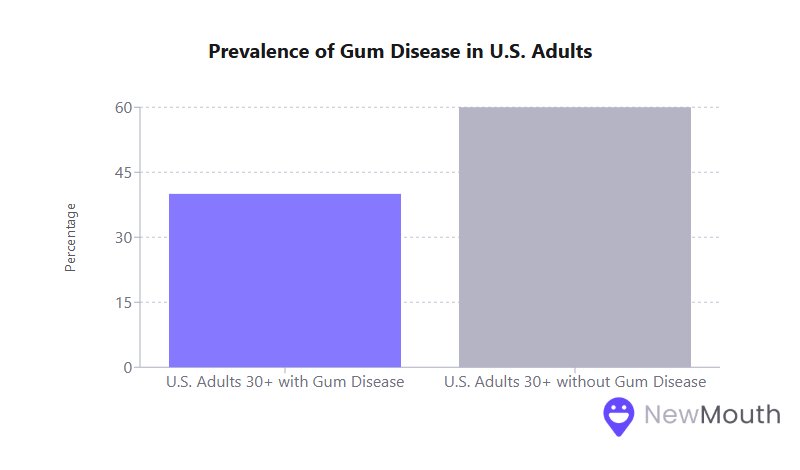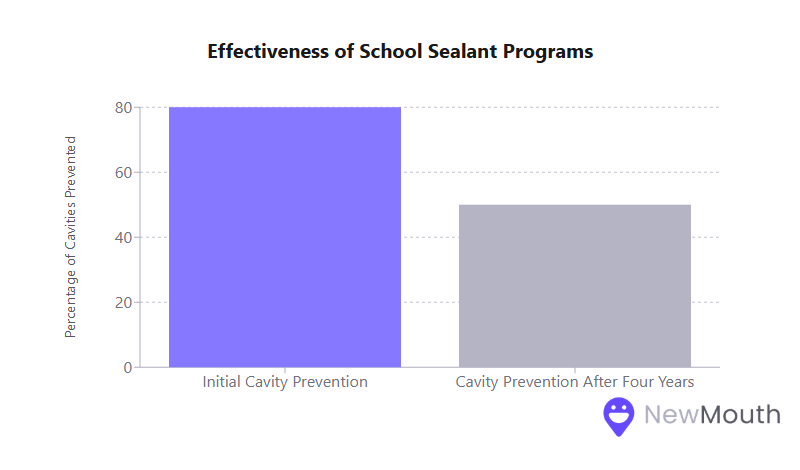In this article
Preventive dental care is a cornerstone of oral health that can dramatically reduce the likelihood of cavities, gum disease, and costly treatments.
Research over the past decade consistently shows that regular check-ups, cleanings, and simple interventions such as sealants and fluoride treatments lead to better long-term oral health outcomes and lower overall expenses. In an era where healthcare costs continue to rise, preventive dentistry stands out as both a clinically effective and cost-efficient practice.
Broadly speaking, preventive dental services range from routine professional cleanings and X-rays to protective treatments like fluoride varnishes and sealants. Community-based efforts, such as school sealant programs and public education initiatives, have proven especially beneficial in reducing tooth decay among children.
Meanwhile, personalized recall schedules and targeted preventive measures can benefit adults of all ages, particularly those at higher risk due to factors like smoking or chronic diseases.

Understanding how common dental issues are underscores why preventive measures matter. Tooth decay (dental caries) remains one of the most widespread chronic conditions globally, affecting children and adults alike.
Gum disease (periodontal disease) is also extremely prevalent; in the United States alone, around 40% of adults 30 and older show some degree of periodontitis. Both conditions are closely linked to daily habits and regular check-ups, which help detect early warning signs.
Without intervention, small dental problems, like early decay or mild gingivitis, frequently progress into bigger issues: deep cavities, root infections, or advanced gum disease.
This typically leads to more invasive and costly treatments, such as root canals and extractions. In contrast, regular preventive care addresses issues early on, significantly reducing the overall disease burden.
Routine dental cleanings (often biannual, though the frequency may vary by individual risk) are critical for removing plaque and tartar that daily brushing can miss. They also help prevent the progression of cavities and gum inflammation.
Professional cleanings lower the bacterial load in the mouth, reducing the risk of tooth decay and gum disease.
They are especially important for high-risk populations: those who smoke, have diabetes, or have a history of frequent cavities benefit most from two or more cleanings per year. Research indicates that:
Dental X-rays are a preventive tool for spotting hidden cavities, bone loss, or other issues not visible during a standard exam. Guidelines recommend an individualized X-ray schedule based on age and risk level.
X-rays allow for early intervention. A cavity caught on an X-ray at the enamel stage can be treated with a small filling, often costing a fraction of what a crown or root canal would require if the decay spreads.
Therefore, routine X-rays balance minimal radiation exposure with the clear benefit of preventing extensive damage and costly treatments later on.
Sealants are thin protective coatings applied to the grooves of molars, while fluoride can be delivered in various ways (varnish, toothpaste, rinse, or water fluoridation). Both significantly reduce the incidence of cavities.

One of the most compelling reasons to invest in preventive dentistry is its economic advantage. Basic services (cleanings, sealants, and check-ups) cost far less than major interventions like root canals, crowns, or implants that often become necessary if minor problems go untreated.
Individuals and insurance providers alike see significant savings when prevention is prioritized:
A standard cleaning covered by insurance may cost as little as $0 to $200 out-of-pocket, far less than a $1,000+ root canal or a $3,000 implant that might result from neglected decay.
Preventive strategies can be tailored to each stage of life, ensuring effective care from childhood through retirement.
Even the best professional dental services can’t offset poor daily habits. Brushing, flossing, and dietary choices at home collectively form the bedrock of oral health.
Family involvement also multiplies positive outcomes: parents who prioritize their own dental check-ups and model good brushing habits often raise children with fewer cavities. A consistent “dental home,” where the entire family sees the same provider, fosters continuity, trust, and better compliance with preventive measures.
Bringing preventive dentistry to children at schools is a proven strategy for increasing access and cutting down on disease in populations most at risk.
On a broader scale, community education campaigns (e.g., public-service announcements or workshops) have helped raise awareness about brushing techniques, sugar consumption, and the importance of regular dental visits. These outreach efforts lead to measurable shifts in behavior, reduced cavity rates, and narrow oral health disparities.
Finally, preventive dental care’s impact extends far beyond clinical measures. People who take care of their teeth regularly enjoy a higher quality of life overall.
Ultimately, a focus on prevention supports not just oral health but overall well-being. By minimizing dental problems, individuals can concentrate on enjoying life instead of dealing with pain or expensive treatments.
Preventive dental care serves as a powerful strategy to lower the rates of cavities, gum disease, and other oral conditions. Statistical trends show that routine measures, such as regular cleanings, appropriate X-ray intervals, and targeted treatments like sealants and fluoride, translate into better oral health outcomes for children, adults, and seniors alike. These interventions also pay off financially by reducing the need for more extensive procedures later.
Furthermore, broad adoption of preventive habits contributes to improved quality of life. Less dental pain, fewer missed school or work days, and greater self-confidence are just some of the benefits tied to consistent oral care. By investing in prevention, both individually and collectively, through community programs, society can reap substantial rewards in healthcare savings, personal well-being, and overall public health.
Preventive dentistry’s success story emerges not just from the clinical evidence but also from the lived experiences of countless families who have avoided burdensome, painful treatments by staying ahead of problems. These simple, consistent actions ultimately ensure healthy smiles for a lifetime.
In this article